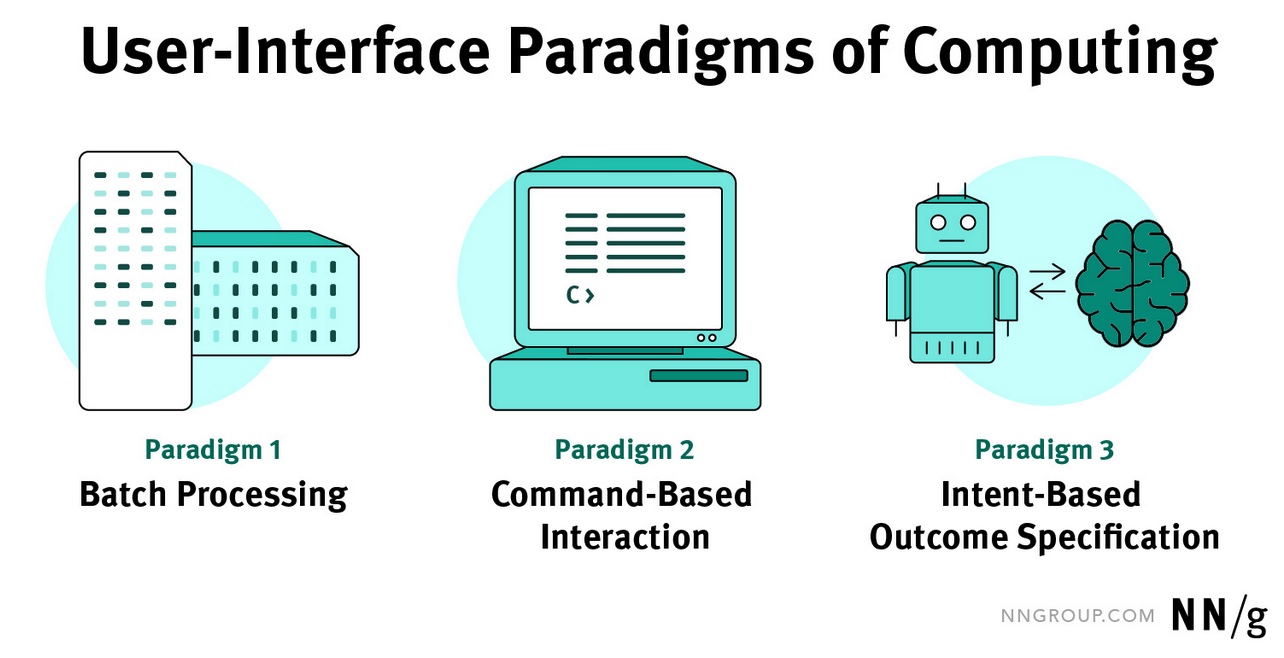
Paradigm Wikipedia
Paradigm shift Wikipedia
Paradigm OED
Paradigm Thesaurus.com
Paradigm synonyms Merriam-Webster
Paradigm ethymology etymonline.com
UI paradigms Jakon Nielsen at nngroup.com
...AI is introducing the third user-interface paradigm in computing history, shifting to a new interaction mechanism where users tell the computer what they want, not how to do it — thus reversing the locus of control....The beauty of graphical user interfaces is that they do show the status after each command, at least when designed well. The graphical user interface has dominated the UX world since the launch of the Macintosh in 1984: about 40 years of supremacy until it possibly is replaced by the next generation of UI technology and, more importantly, the next UI paradigm in the form of artificial intelligence.
...in command-based interactions, the user issues commands to the computer one at a time, gradually producing the desired result (if the design has sufficient usability to allow people to understand what commands to issue at each step). The computer is fully obedient and does exactly what it’s told. The downside is that low usability often causes users to issue commands that do something different than what the users really want.
With the new AI systems, the user no longer tells the computer what to do. Rather, the user tells the computer what outcome they want. Thus, the third UI paradigm, represented by current generative AI, is intent-based outcome specification.
...Clicking or tapping things on a screen is an intuitive and essential aspect of user interaction that should not be overlooked. Thus, the second UI paradigm will survive, albeit in a less dominant role. Future AI systems will likely have a hybrid user interface that combines elements of both intent-based and command-based interfaces while still retaining many GUI elements.
